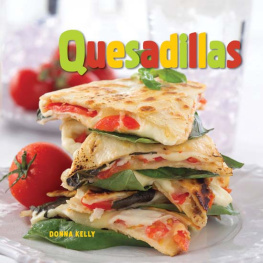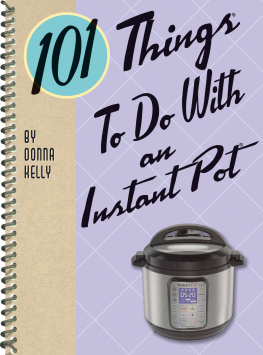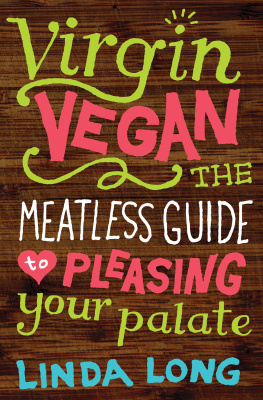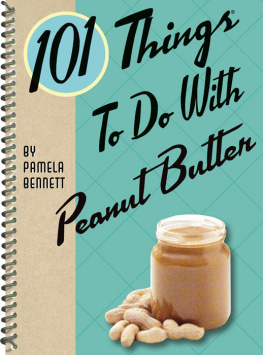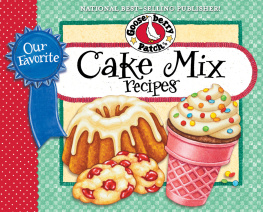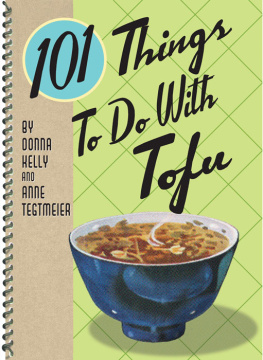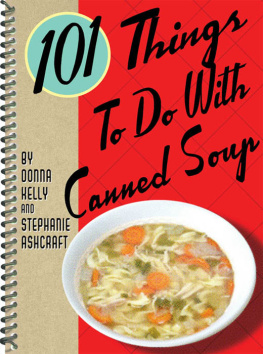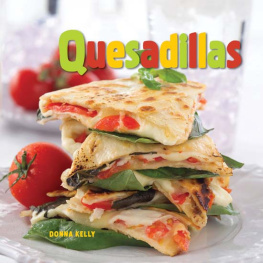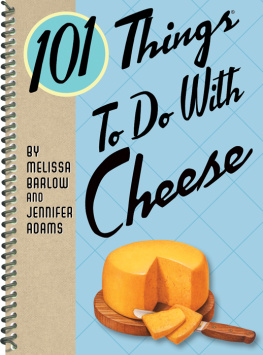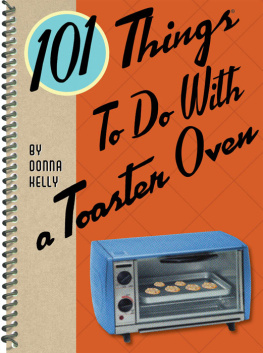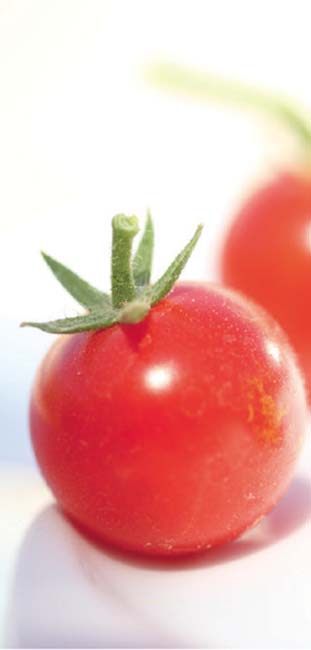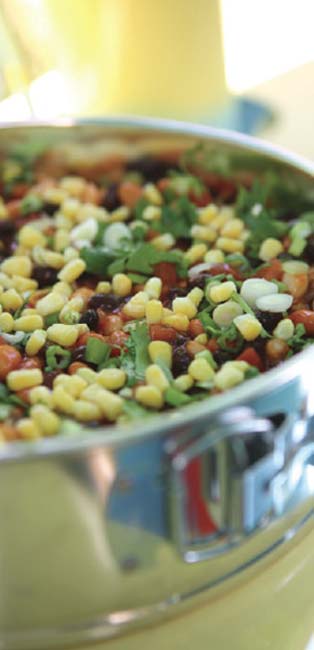All rights reserved. No part of this book may be reproduced by any means whatsoever without written permission from the publisher, except brief portions quoted for purpose of review.
1. Quesadillas. I. Title.
Introduction
Quesadillas Roots
Simply put, the quesadilla is a delightful package of strong-flavored foods with melted cheesy goodnessall sandwiched inside crispy tortillas. It is the ultimate blend of Southwest Old World tradition and New World foods. When the conquistadores arrived in Mexico in the fifteenth century, they found the natives eating what they described as corn cakes. These were the ancestors of what we call tortillas today. These natives used tortillas like the Europeans used breadas a side dish for their meals. They also used them as utensils, as a sort of edible plate or a spoon to hold other foods while eating. The Spaniards had enjoyed pastries stuffed with fillings and eaten like a sandwich, so the transition to using tortillas instead of pastry was an easy one. The word quesadilla is loosely translated to English as little cheese snack. Since the popular filling for these bundles was cheese, the term fit.
I grew up a few miles north of the Mexican border in Tucson, Arizona, where quesadillas were a staple in most households. They were a cinch for us kids to makewe just added a few handfuls of grated cheese to a tortilla, folded it over, and cooked it in a skillet until the cheese was melted and the tortilla had browned. And, with the invention of microwave ovens, quesadilla time went from mere minutes to seconds. They were the perfect after-school snack food. And the adults made fancier versions as appetizers for parties or with more fillings as a main dish.
Over the years, quesadillas have become increasingly popular in America. The foods and spices of most cultures are now often captured inside a quesadilla. The two essential ingredients are tortillas, which form the crisp outside crust, and cheese, which is necessary as the glue that melts and holds the quesadilla together.
Quesadillas are so simple, delicious, and easy to make that their popularity has survived centuries of time.
Cooking Techniques
There are several popular methods for making quesadillas. They can be baked, grilled, microwaved, or pan cooked, with or without oil. There are even specialty quesadilla makers available in the kitchen department of many stores. All methods use high heat to ensure the crispiness of the tortillas.
Baking
To bake quesadillas, simply put the stuffed tortillas on a wire rack that is standing on a baking sheet and place in the middle of the oven. Bake for about 20 minutes at 425 degrees. The actual baking time will vary according to how much filling is in each quesadilla. The more filling a quesadilla has, the longer it will take to bake. The goal is to have a quesadilla with the cheese fully melted, the filling heated through, and the tortilla crispy. Watch closely the last few minutes to make sure the tortillas dont become too brown. Cook until tortillas have browned and filling is cooked through. Nut- or cheese-crusted quesadillas require the baking method because the nuts and cheese loosen when turning quesadillas in a skillet.
Grilling
For grilling, place quesadillas on a hot grill with very low flames. Close cover and wait a minute or two, watching closely so tortillas dont become too brown. Turn over with a wide spatula, close cover, and grill another minute or two, or until tortillas have browned and filling is cooked through.
Microwaving
Microwaving quesadillas can be done, but you will not have a crisp, crunchy texture. If you prefer your quesadillas soft, then fill the tortillas and place in a microwave. Cook on high for about 60 seconds, then remove quesadilla, wipe plate dry, turn the quesadilla over, and cook about 60 seconds more. Actual time will vary depending on how much filling is in the quesadilla. Cook until filling is cooked through and cheese is melted.
Toasting in a Skillet
The best method for cooking quesadillas is in a dry, covered skillet over medium heat, or in a quesadilla maker. When using a skillet, it should be dry, with no oil or butter used, in order to prevent oily or burned quesadillas. This toasting method also ensures that the filling will be cooked through, the cheese will be melted, and the tortillas will be crisp and browned. I prefer cooking quesadillas with two flat tortillas rather than one folded tortilla, because this ensures more even cooking. Choose a skillet that is just slightly wider than your tortillas. For example, use a 10-inch skillet for tortillas that are 8 to 9 inches in diameter.
Start by placing a dry tortilla in a skillet that has been heated to medium heat. Place the filling ingredients on the tortilla, making sure that there is some cheese both on the top and the bottom of the filling. This will help the quesadilla stick together. Place another tortilla on top. Cover with a tight-fitting lid. This will hold the heat in and cook the quesadilla all the way through without burning the outside of the tortillas. Let the quesadilla cook for a minute or two. Check to see if the bottom tortilla has browned. If so, turn the quesadilla over with a very wide spatula. Place lid on skillet and cook another minute or two, or until bottom tortilla has browned, filling is cooked through, and the cheese is melted.
Ingredient Tips
Since there are so few ingredients in quesadillas, be sure to buy the best quality you can find. Ingredients must generally be cooked before adding to the quesadilla, because the purpose of the final cooking of the quesadilla is not to cook ingredients but to crisp the tortillas, melt the cheeses, and heat the filling through. Slice all ingredients thinly so that the quesadilla is relatively flat and has no large lumps or bulges.
Cheeses
Cheese comes in three general categories: melting cheeses, hard cheeses, and soft cheeses. Combining types of cheeses in one quesadilla gives a greater richness than any one cheese.
In most quesadilla recipes, there is some type of cheese that melts well. This ensures that the quesadilla will be glued together. The most common cheeses for quesadillas are cheddar and Monterey Jack. Other types of cheeses that melt well are fontina, Havarti, Gouda, Gruyre, and mozzarella.
Hard cheeses are primarily used for strong flavor. The most common hard cheeses are Parmesan, Asiago, and Romano.

